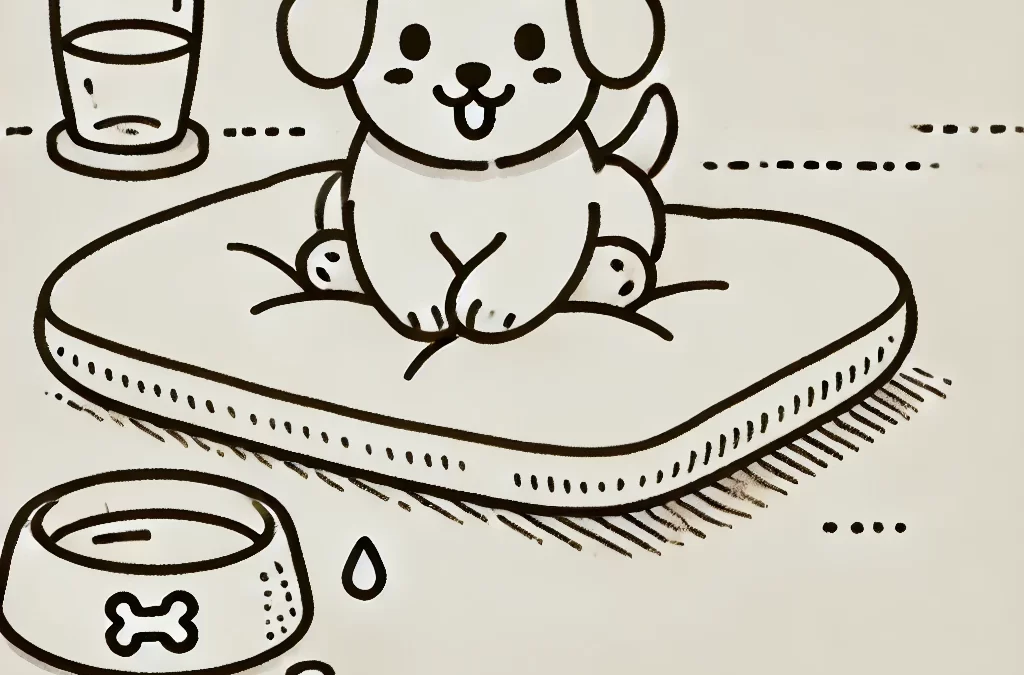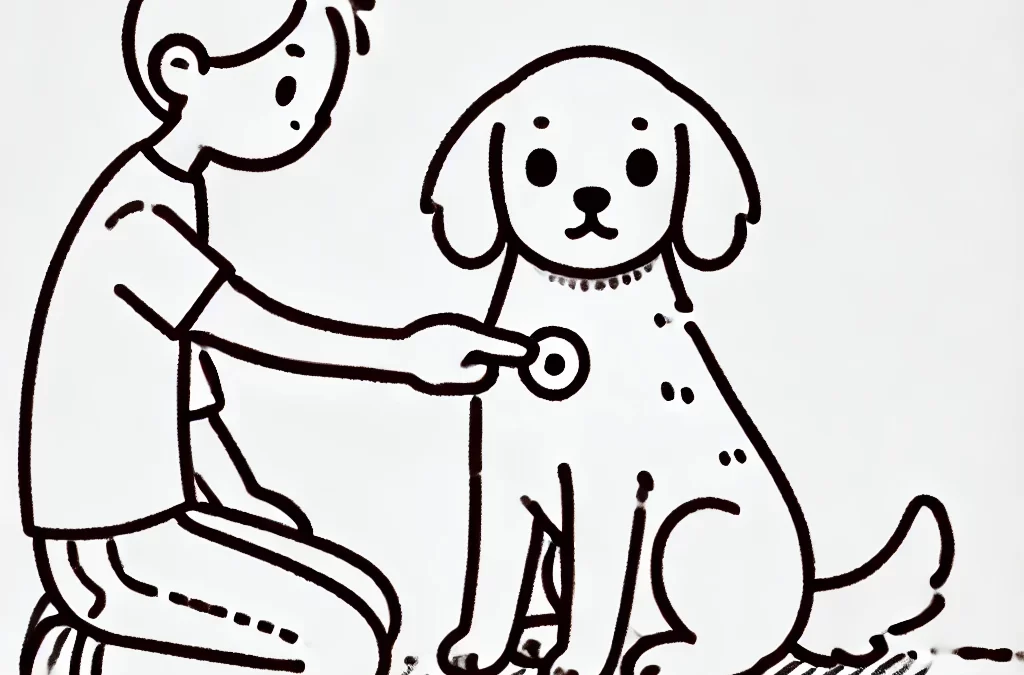
經過 TCMVET | 2025年2月11日 | 狗癌症和腫瘤
對於寵物主人來說,當他們心愛的貓咪被診斷出患有癌症時,整個過程都會充滿不確定性,這讓他們心碎。雖然通常建議手術、化療和放療等傳統治療方法,但許多人正在尋求替代方法來補充這些選擇,或在某些情況下作為整體護理的整體方法。最有前景的領域之一是利用 自然療法 幫助減緩貓體內腫瘤的生長,不僅為寵物和主人提供身體上的緩解,還提供情感上的安慰。
腫瘤管理中的自然力量
自然療法利用植物、草藥和其他天然物質的治療功效來促進癒合、減少發炎和增強免疫系統。與主要消除癌細胞的傳統治療方法不同,自然療法旨在增強身體從內部對抗癌症的能力。這種整體方法不僅針對腫瘤本身,還尋求恢復整個系統的平衡,為治療貓癌症提供全面的解決方案。
減緩貓咪腫瘤生長的關鍵自然療法
- 薑黃(薑黃)
最著名的癌症天然療法之一, 薑黃 含有一種叫做 薑黃素,已被證明具有強大的抗炎、抗氧化和抗癌特性。薑黃素可以透過抑制癌細胞增殖和促進細胞凋亡(程序性細胞死亡)來幫助減緩腫瘤生長。此外,它還可以支持肝功能,這對於解毒至關重要,尤其是在癌症治療期間。
- 大麻二酚 (CBD) 油
CBD油另一種源自大麻的強效天然藥物,因其在癌症管理方面的潛力而備受關注。研究表明,CBD可以透過誘導癌細胞死亡和減少發炎來減緩腫瘤的生長。此外,它還可以透過控制癌症治療中常出現的疼痛和焦慮來改善貓咪的生活品質。
- 靈芝(Ganoderma lucidum)
靈芝因其增強免疫力的功效而長期被用於傳統中醫(TCM)。它們含有β-葡聚醣,可以增強免疫功能並提高人體抗癌能力。透過支持免疫系統和提高整體活力, 靈芝 可以幫助減緩腫瘤生長並增強貓咪抵抗癌症的能力。
- 黃耆根(黃耆)
常用於中醫, 黃耆 因其增強免疫功能和減少發炎的能力而聞名。透過刺激白血球的產生和增強免疫反應,黃耆可以幫助人體更有效地對抗癌症並減緩腫瘤的進展。
- 艾西亞克茶
艾西亞克茶是由四種草藥(牛蒡根、羊酢漿草、榆樹皮和印度大黃)混合而成的,因其解毒功效和潛在的抗癌作用而聞名。人們認為這種茶可以透過改善免疫系統、排毒和抑制癌細胞的生長來發揮作用。
TCMVET 白兔笑:古代智慧的現代詮釋
對於尋求有針對性、現代化應用這些古老治療原則的寵物主人來說, TCMVET百凸消 本產品專為幫助控制寵物腫瘤而配製。結合具有抗癌功效的傳統中草藥,如 百花蛇蛇草 和 當歸,結合現代草藥補充劑的進步,TCMVET 百土消為腫瘤護理提供了一種均衡的方法。
- 減緩腫瘤生長:TCMVET白兔消中的草藥經過精心挑選,共同作用,抑制腫瘤生長並減少現有腫瘤的大小。它的配方有助於控制癌細胞,同時促進整體健康。
- 增強免疫力:透過增強免疫系統,TCMVET 白土消可以幫助您的貓的身體更有效地抵抗癌症並防止復發。
- 最大限度地減少副作用:使用 TCMVET 白土消的主要好處之一是它能夠減輕發炎和不適,幫助貓咪在接受治療時保持舒適。
將 TCMVET 百土消納入貓的護理方案中,可以作為綜合、整體治療腫瘤方法的一部分,帶來顯著的益處。
為什麼要為您的貓選擇天然療法?
選擇自然療法來減緩貓咪的腫瘤生長並不是取代傳統治療方法;它是為了增強身體的自癒能力。自然療法可以取代化療和放療常見的嚴重副作用,並與傳統療法協同作用,改善整體健康和舒適度。
透過使用自然療法,例如 薑黃, CBD油, 靈芝, 和 黃耆以及 TCMVET百凸消,寵物主人可以幫助他們的貓感覺更好,活得更長,並且堅強地面對癌症。
最後的想法
使用自然療法治療貓的腫瘤是一種富有同情心的整體方法,旨在滋養和支持身體而不是簡單地針對腫瘤。這些療法可以透過改善整體健康狀況、增強免疫力和減少發炎來增強常規治療。在添加任何新的治療方法之前,請務必諮詢您的獸醫,以確保為您的貓科動物夥伴提供最佳的護理。

經過 TCMVET | 2025年2月10日 | 狗癌症和腫瘤
貓咪罹癌是一種令人震驚的診斷,但了解免疫系統的作用可以讓我們了解如何幫助我們的貓科動物夥伴。免疫系統是我們身體的天然防禦機制,它不懈地抵抗感染、異常細胞甚至潛在的腫瘤。不幸的是,腫瘤有時能夠逃避免疫系統的攻擊,導致癌症生長和擴散。因此,問題出現了: 我們如何增強貓咪的免疫系統來對抗癌症並降低腫瘤形成的風險?
貓腫瘤與免疫系統之間的聯繫
免疫系統在預防癌症發展中扮演關鍵角色。它可以識別並摧毀異常細胞,包括那些可能發展成腫瘤的細胞。然而,有些癌細胞具有逃避或抑制免疫系統的能力,使得人體更難辨識和摧毀它們。
對於貓來說,這種免疫逃脫可以透過多種方式實現。腫瘤可能會發展出免疫檢查點或阻止免疫細胞攻擊的機制。它們還可以產生抑制免疫反應的物質。這意味著,即使貓的免疫系統很強大,如果免疫系統無法正常運作,某些類型的癌症仍可能發展。
然而,透過支持和加強貓的免疫系統,您可以幫助它的身體抵抗這些異常細胞,並可能減緩現有腫瘤的進展或降低新腫瘤形成的風險。
貓的免疫系統如何運作
在深入研究增強免疫系統的方法之前,必須先了解貓的免疫系統如何運作。與人類一樣,貓也具有由各種細胞和器官組成的複雜防禦網絡,它們共同努力保護它們免受疾病侵害。主要參與者包括:
- 白血球(T 細胞、B 細胞、巨噬細胞):這些細胞負責識別和攻擊有害的入侵者,例如病毒和癌細胞。
- 淋巴結和脾臟:這些器官分別過濾淋巴液和血液,捕獲有害病原體和異常細胞。
- 抗體:由 B 細胞產生的這些蛋白質有助於中和病原體並針對癌細胞。
- 細胞因子:這些是幫助協調免疫反應並確保免疫細胞正常運作的信號分子。
免疫系統在癌症預防中的作用在於它能夠在突變或受損的細胞癌變之前檢測並摧毀它們。然而,當免疫系統受到損害時,它執行這些任務的效率就會降低,導致癌細胞不受控制地生長。
增強貓咪免疫系統的方法
有幾種策略可以增強貓的免疫系統,包括透過改變飲食和生活方式,以及透過有針對性的補充劑。以下是一些增強貓咪免疫力並可能降低腫瘤風險的方法:
1. 提供均衡、營養豐富的飲食
健康的飲食是強大免疫系統的基礎。貓需要均衡的飲食,富含必需的營養素,包括蛋白質、維生素和礦物質。模仿它們在野外飲食的高品質、適合物種的飲食對於維持整體健康和免疫功能至關重要。
- 抗氧化劑:富含抗氧化劑的食物,如維生素 A、C 和 E,可以幫助保護免疫細胞免受氧化損傷。抗氧化劑可以中和體內的自由基,自由基會削弱免疫系統並導致癌症的發展。
- Omega-3 脂肪酸:魚油和某些植物油中含有的 Omega-3 脂肪酸具有抗發炎特性,有助於調節免疫反應。它們可以支持健康的免疫功能,也可能有助於減少與癌症相關的發炎。
- 鋅和硒:這兩種礦物質對於正常的免疫功能至關重要,並參與免疫細胞的產生和反應。
2. 加入增強免疫力的補充劑
有幾種補充劑是專門為支持貓的免疫系統而設計的。在為貓的飲食添加任何補充劑之前,請務必諮詢獸醫,但一些常見的免疫增強劑包括:
- 初乳:初乳是哺乳動物出生後立即產生的乳汁,含有支持免疫功能的抗體和生長因子。它可以增強貓的免疫活動並有助於預防癌症。
- 蘑菇萃取物:某些蘑菇,如靈芝和舞茸,因其增強免疫力的特性而聞名。這些蘑菇含有可以活化免疫細胞並增強其抵抗癌細胞的能力的化合物。
- 益生菌:健康的腸道微生物群對於免疫健康至關重要。益生菌有助於維持腸道菌叢平衡,進而支持免疫功能。
3. 減輕壓力
眾所周知,慢性壓力會抑制免疫系統,使其防禦癌症和其他疾病的效果降低。長期處於壓力之下的貓更容易患病,包括癌症。為了減輕貓咪的壓力:
- 提供安全、安靜的環境:貓是敏感的動物,容易因環境或日常活動的變化而感到壓力。確保您的貓有一個安靜、安全的空間,當它們需要時可以撤退。
- 遊戲和精神刺激:定期玩耍和參與可以幫助緩解壓力。互動玩具、貓抓柱以及益智餵食器可以讓您的貓保持精神刺激,並防止因無聊而產生的壓力。
- 一致性:嘗試為您的貓咪保持一致的日常生活習慣,包括餵食時間、玩耍時間和梳理毛髮。可預測性可以幫助貓咪感到安全並減少焦慮。
4. 定期獸醫檢查和篩檢
定期的獸醫檢查對於維持貓咪的整體健康和確保其免疫系統發揮最佳功能至關重要。定期篩檢和檢查可以及早發現潛在的健康問題,包括腫瘤。越早發現腫瘤,成功治療的機會越大。
- 疫苗接種:及時給貓咪接種疫苗,以防止可能削弱免疫系統並導致癌症進展的感染。
- 血液檢查:定期血液檢查可以幫助監測貓的免疫系統並及早發現任何問題。
5. 考慮整體治療
一些整體治療,如針灸、草藥和順勢療法,可能有助於刺激免疫系統並支持癌症治療。例如,某些中草藥已被證明可以增強免疫反應,並可能補充貓癌症的常規治療。
結論:增強貓咪的免疫系統
免疫系統在預防和對抗貓的癌症方面發揮關鍵作用。雖然腫瘤有時可以逃避免疫系統的防禦,但為您的貓提供均衡的飲食、增強免疫力的補充劑、減輕壓力和定期的獸醫護理,可以幫助提高它們保持健康的機會並降低腫瘤發展的風險。
雖然沒有萬無一失的方法來預防癌症,但透過這些做法增強貓的免疫系統可以為它們在未來幾年保持良好的健康提供最大的機會。始終與您的獸醫密切合作,制定適合您貓的獨特需求的免疫增強計劃。透過適當的護理,您的貓的免疫系統可以成為對抗癌症的強大盟友。

經過 TCMVET | 2025年2月9日 | 狗癌症和腫瘤
當您的貓被診斷出患有腫瘤時,這對您和您的貓咪來說都可能是一次難以承受的經歷。傳統的治療方案通常著重於手術、化療或藥物治療,但現在出現了一種專注於整體健康的新興方法: 適度運動。這個想法可能聽起來令人驚訝,但研究表明,運動可以成為增強貓免疫系統的寶貴盟友,有可能改善它們的生活品質並幫助它們康復。在本文中,我們將探討在腫瘤治療期間適度運動如何有益於貓的免疫力和整體健康。
運動與免疫力之間的關聯:你需要知道什麼
在深入了解細節之前,讓我們先了解運動和免疫系統背後的科學。對於人類和動物而言,定期的體力活動已被證明可以刺激白血球的產生(抵抗感染)、增強血液循環、促進體內毒素的排出,從而提高免疫功能。這意味著即使在癌症治療期間,輕柔的運動也可以支持貓的自然防禦機制,使它們更容易抵抗感染並從疾病中恢復。
為什麼適度是關鍵
適度運動與劇烈的體力活動不同,是一種低衝擊的運動方式,注重促進活動能力而不給身體帶來壓力。對於患有腫瘤的貓來說,過度勞累可能會有害,導致疲勞或加劇其症狀。因此,取得平衡至關重要:目標是融入令人愉悅和刺激的活動,但不要給貓的身體帶來壓力。
那麼,如何確保你的貓咪得到適量的運動呢?
1. 短暫遊戲時間:著重心理參與
患有腫瘤的貓可能不像診斷前那樣有精力水平,所以不要讓它們承受太大的壓力。不要長時間玩遊戲,而要 短暫、頻繁的遊戲時間。與他們最喜歡的玩具進行十到十五分鐘的互動遊戲就足以刺激他們的身心。無論是羽毛棒、雷射筆還是簡單的球,讓貓咪保持精神活躍與身體活動同樣重要。
這些遊戲有助於保持肌肉張力和靈活性,同時促進血液循環,所有這些都有助於提高免疫力。關鍵在於一致性——嘗試讓這些訓練成為貓咪日常生活的一部分,並根據它們的舒適程度調整每次訓練的時間長度。
2. 透過安全、輕鬆的移動鼓勵探索
如果你的貓習慣於活躍和好奇,鼓勵它們 探索低壓力環境 在您的家中。貓喜歡四處遊蕩,即使是微小的、可控的動作也會有益處。例如,允許它們在房間之間移動或探索房子的新區域。保持它們的生存環境安全,沒有可能導致受傷的障礙物,並確保附近有舒適的休息地點,以方便它們在需要休息時使用。
全天提供運動的機會將有助於促進淋巴引流,從而有助於排毒。這種輕柔的運動還可以幫助維持肌肉質量和關節健康,這對整體健康至關重要。
3. 安排輕鬆散步或戶外時間
對於喜歡戶外活動的貓(或如果你有一個安全的戶外圍欄), 輕鬆散步 可以成為鼓勵運動的絕佳方式。用皮帶牽著你的貓散步(如果它們覺得舒服的話)可以讓它們探索和伸展它們的腿,促進血液循環,並提供變化的風景。
不過,一定要保持運動時間短,並避免炎熱或潮濕的天氣,因為這會對貓咪的身體造成額外的壓力。目標是讓這些戶外活動變得愉快、輕鬆,而不是費力。
4. 按摩和拉伸:間接鍛煉
當你的貓患有腫瘤時,它們身體的特定部位可能會感到緊張或不適。 輕柔按摩 這是一種增強血液循環的絕佳方法,無需你的貓進行體力消耗。輕柔的撫摸和輕微的拉伸有助於血液流動並防止僵硬。
有些貓也喜歡被輕輕地伸展——尤其是背部和腿部。這些動作可以幫助防止肌肉萎縮並促進放鬆。像往常一樣觀察你的貓的反應;如果他們看起來不舒服或抗拒,請後退並嘗試更溫和的方法。
5. 根據客戶需求制定方法
每隻貓都是獨一無二的,它們對運動的反應會根據腫瘤的類型和階段、年齡和整體健康狀況而有所不同。至關重要的是 根據貓咪的情況調整治療方法。有些貓可能需要更多的休息,而有些貓則需要稍微多一點的活動。與您的獸醫溝通,評估多少運動量適合您的貓的具體情況。
休息和活動的適當平衡可以幫助您的貓在治療期間感覺更舒適,提高其能量水平,並支持其免疫系統。始終監控貓的能量水平和行為,以確保它們不會過度勞累。
飲食和補充劑的作用
雖然運動對於增強免疫力起著至關重要的作用,但配合適當的飲食和補充劑也是必不可少的。給你的貓提供高品質、營養均衡的食物是至關重要的,尤其是在癌症治療期間。此外,考慮加入 增強免疫力的補充劑 如 Omega-3 脂肪酸、抗氧化劑和特定草藥,以增強其防禦系統。
草藥補充劑,如 川芎(四川獨生), 靈芝, 和 薑黃 對癌症患者有輔助作用。在給貓的日常飲食中添加任何新的補充劑之前,請務必諮詢獸醫。
結論:一條溫和的療癒之路
人們很容易認為,像癌症這樣的診斷意味著你的貓必須一直休息,但適量的 適度運動 在維持健康和增強免疫力方面可以發揮重要作用。透過短暫的玩耍、輕鬆的散步、安全的探索和偶爾的按摩,您可以幫助您的貓保持活躍,以支持其身體的自然癒合過程。
記住,目標是 適度— 運動不應強迫,而應以適合貓咪舒適程度的方式鼓勵。始終傾聽貓的暗示並與獸醫密切合作,以確保您選擇的活動安全且有益。透過耐心、愛心和適量的輕柔動作,您可以用力量和活力幫助您的貓咪度過抗癌之旅。

經過 TCMVET | 2025年2月7日 | 狗癌症和腫瘤
對於患有癌症的狗來說,化療可以挽救生命,但它通常會帶來影響其生活品質的副作用。雖然對狗的化療通常比對人類的化療要溫和,但許多狗仍然會經歷 消化問題、疲勞、食慾不振和免疫力下降。了解如何 盡量減少不適 並提供適當的 營養和支持性治療 可以顯著改善您的狗在治療期間的健康狀況。
狗狗化療的常見副作用
🐶 胃腸道問題 – 由於化療對快速分裂的胃壁細胞的影響,嘔吐、腹瀉、噁心和食慾不振是常見的症狀。
🐶 疲勞和虛弱 – 您的狗可能比平常更累,需要更長的休息時間。
🐶 免疫力下降 – 化療會降低白血球數量,讓您的狗更容易受到感染。
🐶 脫髮(特定品種) – 雖然大多數狗不會掉很多毛髮,但毛髮不斷生長的品種(例如貴賓犬)可能會出現明顯的毛髮稀疏。
🐶 口腔潰瘍和流口水 – 有些狗狗會出現口腔潰瘍,導致進食時感到不適。
如何減輕化療的副作用?
1. 控制噁心和嘔吐
- 少量多餐,而不是大量進食。
- 提供清淡、易消化的食物,如 白煮雞肉、白飯和南瓜.
- 薑 (新鮮或補充形式)有助於減輕噁心感。
- 如果嘔吐持續,請向獸醫諮詢止吐藥,例如 Cerenia(馬羅匹坦).
2. 促進食慾,防止體重減輕
- 稍微加熱狗糧可以增強香氣,促進其進食。
- 嘗試高熱量、營養豐富的食物,例如 煮熟的雞蛋、瘦肉和乳酪.
- 考慮添加 骨湯或羊奶 進餐時補充水分和營養。
- 如果你的狗拒絕進食,可以嘗試以下食慾刺激劑: 米氮平 可能會有幫助。
3. 預防腹瀉和脫水
- 使用 益生菌(例如 FortiFlora) 以支持腸道健康。
- 餵食富含 可溶性纖維 例如南瓜罐頭或蒸紅薯。
- 確保持續獲得淡水並提供 電解質溶液 如果腹瀉持續。
- 如果腹瀉持續超過 24 小時或帶血,請諮詢您的獸醫。
4.增強免疫系統
- 包括 富含抗氧化劑的食物 如藍莓、薑黃和ω-3脂肪酸。
- 藥用蘑菇(例如 火雞尾、靈芝) 可能有助於調節免疫功能。
- 化療期間避免吃生食,因為免疫力下降會增加感染風險。
5. 控制疲勞和虛弱
- 允許你的狗 額外休息 但鼓勵短距離散步等輕度活動,以促進血液循環。
- 提供一個 舒適、溫暖的休息空間 附有柔軟的寢具。
- 考慮輕柔的按摩療法或指壓療法來緩解緊張並改善放鬆。
6. 照顧口腔潰瘍和流口水
- 提供 軟食或濕食 以減少刺激。
- 使用對寵物無害的 口腔漱口水(例如洗必泰溶液) 以防止感染。
- 椰子油可以利用其舒緩和抗菌特性應用於牙齦。
可能有幫助的補充劑
🌿 水飛薊 – 支持肝臟解毒化療藥物。
🌿 CBD油 – 可能有助於緩解疼痛、噁心和發炎。
🌿 L-麩醯胺酸 – 支持腸道內壁健康並降低腹瀉風險。
🌿 Omega-3 脂肪酸(魚油) – 具有抗發炎功效並支持免疫健康。
何時聯繫您的獸醫?
🚨 持續嘔吐或腹瀉超過 24 小時
🚨 嚴重嗜睡或虛脫
🚨 感染跡象(發燒、淋巴結腫大、氣喘吁籲)
🚨 食慾不振持續兩天以上
🚨 無法控制的出血或瘀傷
最後的想法
管理狗的化療副作用需要 平衡的方法 結合 營養支持、家庭護理和獸醫指導。透過密切監測狗狗的反應並做出必要的調整,你可以幫助它們適應治療 更加舒適有彈性.

經過 TCMVET | 2025年2月7日 | 狗癌症和腫瘤
發現狗狗身上有腫塊可能會令人擔憂。這只是一個無害的脂肪瘤嗎?許多寵物主人在在家監測腫塊和趕緊去看獸醫之間猶豫不決。 關鍵是要知道如何正確評估腫塊並識別需要就醫的警告信號。
本文介紹了一種 實用的實踐指南 幫助寵物主人評估狗的腫塊和腫塊,幫助您做出何時尋求獸醫護理的明智決定。
檢查狗狗腫塊的分步指南
🖐 1. 使用「五法則」方法
檢查狗狗身上的腫塊時,請評估以下五個因素:
1️⃣ 尺寸 – 腫塊比豌豆還小嗎,還是會隨著時間的推移而變大?
2️⃣ 形狀 – 它是圓的、光滑的,還是不規則的、凹凸不平的?
3️⃣ 質地 – 它是柔軟且可移動的,還是堅固且附著在下面的組織上?
4️⃣ 顏色和表面 – 腫塊上方的皮膚是否正常、發紅或潰爛?
5️⃣ 成長率 – 幾週或幾個月內它的尺寸有變化嗎?
🐾 2.“兩指測試”
用手指輕輕地移動腫塊。如果感覺 自由移動 如果位於皮下,則更可能是良性的(例如脂肪瘤)。如果是 牢固地附著 對於更深層的組織來說,這可能更令人擔憂。
🔍 3.觀察任何其他症狀
檢查 狗的行為發生變化 和整體健康。他們吃得好嗎?減肥?過度搔抓或舔腫塊?這些線索有助於確定腫塊是否引起不適或全身影響。
常見腫塊類型以及何時需要擔心
🔹 脂肪瘤
✅ 柔軟、圓潤、可移動
✅ 常見於老年或超重的狗
✅ 通常無害,但應監測突然生長的狀況
🔹 皮脂腺囊腫
✅ 充滿濃稠的白色或淡黃色物質
✅ 可能破裂或感染
✅ 通常不嚴重,但如果有問題,可能需要排水或移除
🔹 肥大細胞腫瘤 (MCT)
🚨 常出現紅腫或潰爛
🚨 由於組織胺釋放,尺寸會迅速改變
🚨 需要立即接受獸醫評估,因為它們可能具有攻擊性
🔹 組織細胞瘤
✅ 常見於幼犬,通常出現在頭部或腿部
✅ 出現紅色、凸起、紐扣狀腫塊
✅ 通常會自行消失,但仍應檢查
🔹 軟組織肉瘤
🚨 堅定、根深蒂固、緩慢成長
🚨 常常覺得界限不清
🚨 可能具有侵入性,可能需要手術切除
什麼時候該去看獸醫?
📌 若出現以下情況則需要立即就診獸醫:
- 腫塊 快速成長 或改變形狀
- 這是 牢固地附著 到底層結構
- 有 出血、潰瘍或感染
- 腫塊引起疼痛或不適
- 你的狗表演 其他症狀 如體重減輕、嗜睡或食慾改變
📌 在家監測,如果:
- 該腫塊是 小、軟、生長緩慢
- 你的狗在表演 正常,無不適
- 沒有快速變化 大小、紋理或顏色 被觀察到
獸醫如何診斷腫塊
如果需要去看獸醫,他們可以使用:
🩸 細針穿刺切片檢查 (FNA) – 提取細胞進行顯微鏡檢查
🔬 活檢 – 採集組織樣本進行更詳細的分析
🖥 超音波或 X 射線 – 檢查內部腫塊或轉移
最後的想法
並非所有腫塊都會引起恐慌,但是 早期發現至關重要。最好的方法是 定期檢查狗狗的身體,保持對變化的警惕,如有疑問,請諮詢您的獸醫。積極主動地採取措施可以對確保您的狗的長期健康產生巨大影響。

經過 TCMVET | 2025年2月6日 | 狗癌症和腫瘤
犬脾臟腫瘤通常被稱為 “沉默的殺手” 因為它們可以在很長一段時間內生長而不被發現,只表現出很小的症狀,直到成為醫療緊急情況。許多寵物主人只有在狗狗突然出現內出血時才意識到自己的狗狗患有脾臟腫瘤。了解風險、症狀和治療方案 犬脾腫瘤 對於早期發現和介入至關重要。
什麼是狗的脾臟腫瘤?
脾臟是幫助血液過濾、免疫功能和鐵循環的重要器官。脾臟腫瘤可能 良性(非癌性)或惡性(癌性)。狗最常見的脾臟腫瘤類型包括:
- Hemangioma – 由血管構成的良性腫瘤。
- 血管肉瘤 (HSA) – 一種高度侵襲性的癌症,起源於血管細胞,具有很高的擴散到其他器官的風險。
- 淋巴瘤 – 一種影響淋巴系統並可涉及脾臟的癌症。
- 脾結節性增生 – 一種非癌症疾病,脾臟形成異常結節,但仍可能破裂並引起出血。
其中, 血管肉瘤 是最危險的,佔脾腫瘤很大比例。這種現像在以下品種中尤其常見: 黃金獵犬、德國牧羊犬和拉布拉多獵犬.
狗脾臟腫瘤的症狀
脾臟腫瘤的早期發現很困難,因為許多狗在腫瘤顯著生長或破裂之前都沒有症狀。需要注意的一些跡象包括:
- 嗜睡或虛弱 – 您的狗可能看起來很累並且比平常不那麼活躍。
- 牙齦蒼白 – 貧血的徵兆,通常是由於內出血引起的。
- 突然崩潰 – 如果腫瘤破裂並導致內出血,可能會發生這種情況。
- 腹部增大 – 腹部腫脹可能表示腫瘤正在生長或有內出血。
- 食慾不振和體重減輕 – 食量和體重逐漸下降。
- 呼吸急促或心跳加速 – 血液容積低或缺氧的徵兆。
如果你的狗表現出 出現任何這些症狀,請立即尋求獸醫護理,特別是當它們暈倒或牙齦蒼白時。
如何診斷脾臟腫瘤?
獸醫通常使用以下方法來診斷脾臟腫瘤:
- 體檢 – 檢查腹部是否有腫大或貧血的跡象。
- 超音波 – 有助於觀察脾臟內部的腫塊。
- X光檢查 – 可出現脾臟腫大或轉移跡象。
- Blood Tests – 檢測貧血、白血球計數異常和器官功能變化。
- 細針穿刺或切片 – 有助於確定腫瘤是良性還是惡性。
在許多情況下, 只有在手術切除脾臟並進行檢查後才能做出明確的診斷。
犬脾臟腫瘤的治療方案
1. 手術(脾切除術)
如果發現脾臟腫瘤,最常見的治療方法是 脾切除術(手術切除脾臟)。狗沒有脾臟仍然可以生存,但如果腫瘤是惡性的,單靠手術通常不足以阻止癌症進展。
2. Chemotherapy
為了 血管肉瘤,可能建議手術後進行化療以減緩癌症擴散。然而,預後仍然不佳,平均存活時間為 3至6個月 即使接受治療。
3. 自然和整體支持
有些寵物主人探索 自然療法 來支持狗的免疫系統和生活品質。可能的選擇包括:
- 藥用菇(如火雞尾菇和靈芝) – 可能有助於支持免疫功能。
- 中藥 – 一些草藥混合物,例如 白兔小,已用於腫瘤治療。
- 飲食變化 – 高蛋白、抗發炎飲食可能有益於整體健康。
雖然這些選擇 無法治癒癌症,它們可能增強幸福感並減緩疾病進展。
脾臟腫瘤可以預防嗎?
雖然沒有保證可以預防脾臟腫瘤的方法,但寵物主人可以採取措施降低風險:
- 定期獸醫檢查 – 透過常規檢查和超音波檢查對高風險品種進行早期發現。
- 避免接觸致癌物質 – 減少接觸殺蟲劑、二手菸和劣質寵物食品。
- 支持免疫健康 – 均衡飲食並補充抗氧化劑可能有助於防止細胞損傷。
最後的想法
狗的脾臟腫瘤是一個嚴重的健康問題,尤其是 血管肉瘤此類疾病通常直到危及生命時才被發現。定期帶狗去看獸醫、留意細微症狀並在狗出現痛苦跡象時迅速採取行動,這些都可以起到至關重要的作用。如果您的狗被診斷出患有脾臟腫瘤,請與您的獸醫討論治療方案,以確定最適合您寵物生活品質的治療方案。
透過保持知情和積極主動,寵物主人可以在這個充滿挑戰的時期為他們的狗提供最好的照顧和支持。






